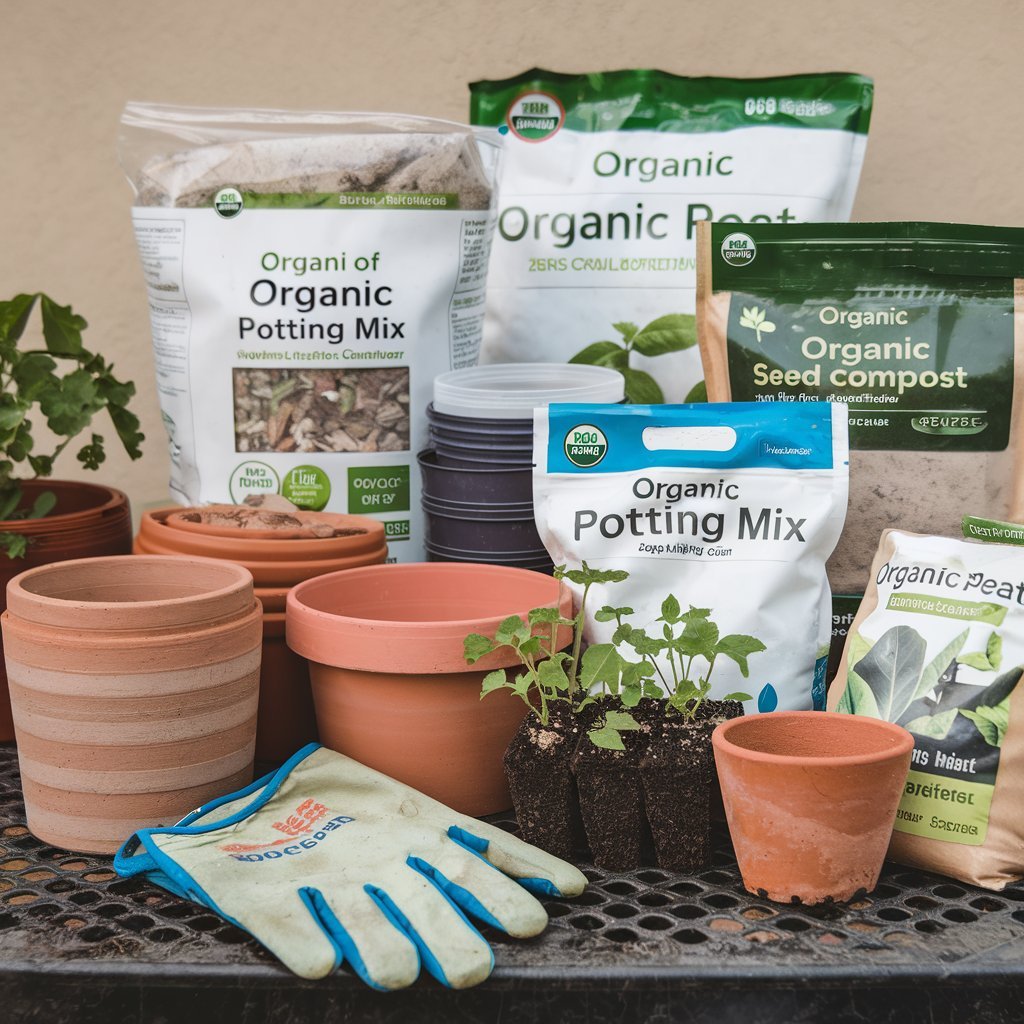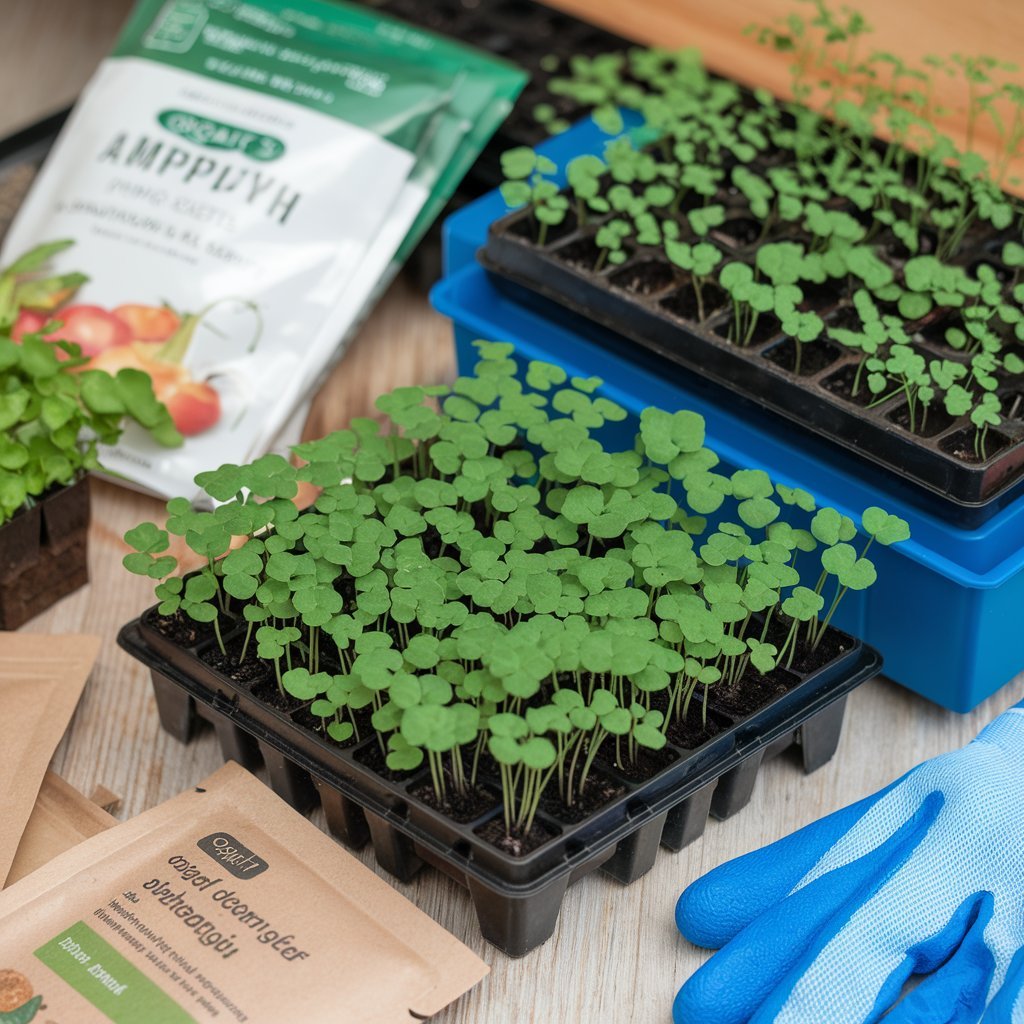Getting into Organic Gardening
Starting an organic garden can be super satisfying. Let’s chat about why USDA Organic Certification is a game-changer and how organic farming helps fight climate change.
Why USDA Organic Certification Matters
When I pick out my gardening supplies, I always look for that USDA Organic label. It means the stuff I’m buying meets strict rules about how it’s grown and handled. No synthetic pesticides, no GMOs, just good, clean farming.
Here’s why that certification rocks:
- No Nasty Chemicals: Organic products skip the synthetic pesticides, so there are fewer chemicals on my food and in the environment.
- Non-GMO: Certified organic seeds are non-GMO, keeping my garden free from genetically modified organisms.
- Healthy Soil: Organic farming boosts soil health with natural fertilizers and compost, making the soil better over time.
- More Biodiversity: Organic farming encourages a mix of plants, which leads to healthier ecosystems.
If you’re thinking about starting your own organic garden, make sure to grab certified organic supplies like organic seed starting mix and organic seed starting kits.
How Organic Farming Helps the Planet
Organic farming is a big deal for the environment. The California Air Resources Board says switching 20% of California’s farms to organic by 2045 could cut greenhouse gas emissions a lot (NRDC).
Here’s how organic farming makes a difference:
- Smaller Carbon Footprint: Organic farming has a way smaller carbon footprint than regular farming. No fossil fuel-based fertilizers or synthetic pesticides means fewer greenhouse gases. Cutting out synthetic nitrogen fertilizers alone could drop global agricultural emissions by about 20% (NRDC).
- Energy Savvy: A study by the Rodale Institute found that organic farms use 45% less energy than conventional ones, while still keeping up with or beating yields after five years.
- Better Soil: Organic practices help soil trap more carbon, leading to higher stable soil organic carbon and lower nitrous oxide emissions compared to regular farming.
| Benefit | Regular Farming | Organic Farming |
|---|---|---|
| Carbon Footprint | High due to synthetic fertilizers | Lower |
| Energy Use | High | 45% less |
| Soil Health | Gets worse over time | Improved with compost and natural fertilizers |

By going organic and using organic seed starting supplies, I can help the planet and enjoy a sustainable garden. For more eco-friendly gardening tips, check out our articles on organic seed starter trays and organic seedling trays.
Picking Organic Seeds
Starting an organic garden? The seeds you choose can make or break your green dreams. Let’s check out some top-notch organic seed companies and why going organic and non-GMO is the way to go.
Top Organic Seed Companies
Finding the right seeds has been a game-changer for my garden. Here are some of my go-to organic seed companies:
| Company | Features | Website |
|---|---|---|
| High Mowing Organic Seeds | 100% organic, Non-GMO Project Verified | highmowingseeds.com |
| Seed Savers Exchange | Heirloom and open-pollinated seeds | seedsavers.org |
| Johnny’s Selected Seeds | Certified organic, wide variety | johnnyseeds.com |
| Baker Creek Heirloom Seeds | Rare and heirloom seeds | rareseeds.com |
These companies offer top-quality seeds that lead to healthy, productive plants. Each one has a variety of seeds perfect for any organic garden.
Why Organic and Non-GMO Seeds Matter
Choosing organic and non-GMO seeds is key to keeping your garden truly organic. Organic seeds are grown without synthetic pesticides, herbicides, or fertilizers, meaning they’re free from nasty chemicals that can mess with soil and water. Non-GMO seeds ensure your plants are natural and not genetically altered.
Organic seeds are also a big deal for sustainable farming. According to the NRDC, organic farming has a much smaller carbon footprint than conventional farming. This is because it avoids fossil fuel-based fertilizers and synthetic pesticides. Organic methods also boost soil carbon storage, leading to more stable soil organic carbon and lower nitrous oxide emissions.
If you’re concerned about climate change, switching to organic farming can make a big impact. The California Air Resources Board suggests converting 20% of California’s farmland to organic by 2045 to help combat climate change (NRDC).
Going for organic and non-GMO seeds also supports biodiversity. Companies like Seed Savers Exchange and Baker Creek Heirloom Seeds offer heirloom and open-pollinated seeds, which are not only sustainable but also help preserve the genetic diversity of our crops.
From my experience, starting with the right seeds is the first step to a thriving organic garden. For more tips on getting started, check out our sections on organic seed starting mix and organic seed starting kits. Happy planting!

Sustainable Garden Practices
When I kicked off my organic garden, I quickly realized that keeping things green and eco-friendly is the secret sauce to a thriving garden. Let me share some tips on keeping your soil happy, saving water, and dealing with pests without going nuclear.
Soil Health and Water Conservation
Healthy soil is the backbone of any good garden. Organic farming practices help the soil soak up carbon, making it richer and cutting down on nasty emissions compared to regular farming. Good soil not only makes plants grow better but also holds onto water, which is a lifesaver during those hot, dry spells.
To keep my soil in top shape, I mix in compost and mulch. This not only feeds the soil but also helps keep water from evaporating too quickly. Fun fact: organic farms can produce up to 40% more than non-organic ones during droughts (NRDC).
Here’s a quick look at how organic soil practices help:
| Practice | Benefit |
|---|---|
| Composting | Adds nutrients, improves soil structure |
| Mulching | Keeps moisture in, regulates soil temperature |
| Cover Cropping | Stops erosion, adds nutrients |
Saving water is a big deal since it’s not endless. I set up my garden to use less water by using drip irrigation and planting native plants that don’t need much water (Gardening4Joy). Native plants are great because they’re used to the local weather and soil, so they need less help from you.
Integrated Pest Management (IPM)
Integrated Pest Management (IPM) is my go-to for keeping pests in check without going overboard. IPM is all about keeping pest levels low enough to not cause problems, rather than wiping them out completely. This means fewer chemicals and a healthier garden (Gardening4Joy).
Here’s how I do it:
- Monitoring: Keep an eye on plants for any signs of pests.
- Prevention: Use barriers, rotate crops, and pick plants that pests don’t like.
- Control: Bring in natural predators, use biological controls, and only use organic pesticides if you really need to.
By sticking to these steps, my garden stays lively and healthy without the need for harsh chemicals. If you’re looking for some good products, check out our organic seed starting kits and organic seedling trays.
Using these eco-friendly practices has made my garden not just healthier but also more resilient. For more tips and supplies, take a look at our articles on organic seed starting mix and organic seed starter trays.
Eco-Friendly Seed Starting Methods
Going green with your gardening? Let’s talk about two awesome ways to start your seeds without hurting the planet: tough seed starting trays and the soil blocker method.
Tough Seed Starting Trays
If you’re into gardening and want to keep it eco-friendly, durable seed starting trays are a great pick. One standout option is the Epic Seed Starting Bundle. This set includes sturdy plastic trays and cells that you can use year after year without them falling apart.
Here’s why the Epic Seed Starting Bundle rocks:
- Built to Last: Made from top-notch plastic, these trays can handle multiple seasons.
- Eco-Friendly: Using long-lasting trays means fewer replacements and less plastic waste.
- Strong and Steady: The bottom trays are tough enough to hold the weight of the seed cells without bending.
These trays fit right into sustainable gardening, making them a solid choice for starting your seeds.
| Feature | Epic Seed Starting Bundle |
|---|---|
| Built to Last | High-quality plastic |
| Eco-Friendly | Less need for replacements |
| Strong and Steady | Sturdy bottom trays |
Want more info on durable seed trays? Check out our guide on organic seed starter trays.
Soil Blocker Method for Seed Starting
Another cool way to start seeds is the soil blocker method. This involves making small soil blocks to plant your seeds in. It’s one of the greenest ways to start seeds.
Here’s how to do it:
- Get Your Stuff: You’ll need a soil blocker tool, an organic seed starting mix, water, and seeds.
- Mix It Up: Add water to your soil mix until it sticks together.
- Make the Blocks: Use the soil blocker tool to press the soil into blocks and pop them onto a tray.
- Plant the Seeds: Put your seeds into the top of each soil block.
- Watch Them Grow: Keep the soil blocks moist and watch your seedlings sprout.
The soil blocker method is great because it cuts out the need for plastic trays and pots, making it super eco-friendly.
For more detailed steps and tips, visit our article on organic seed starting kits.
By using these eco-friendly seed starting methods, you can enjoy gardening while keeping your carbon footprint low. Whether you go with tough seed trays or the soil blocker method, your garden will flourish in an earth-friendly way.

My name is Michelle Warren, and I’m the founder of Peaceful Gardening. As a 10-year breast cancer survivor, I’ve discovered the profound therapeutic power of gardening. This journey has not only helped me recover but has also become my passion and a source of ongoing peace and joy.
Peaceful Gardening was born from my desire to share the healing benefits of gardening with others. Whether you’re facing health challenges, dealing with stress, or simply looking to connect more deeply with nature, this space is for you.
Over the past decade, I’ve cultivated not just plants, but a deep understanding of how gardening can positively impact mental health. I’ve worked with local community gardens, led workshops on mindful gardening practices, and collaborated with mental health professionals to develop gardening-based stress reduction programs.
Peaceful Gardening was born from my desire to share the healing benefits of gardening with others. Whether you’re facing health challenges, dealing with stress, or simply looking to connect more deeply with nature, this space is for you.
Here, you’ll find evidence-based advice on using gardening as a tool for mindfulness, stress relief, and emotional healing. I share personal stories, practical tips, and scientifically-backed information on how to create your own therapeutic garden space, no matter the size of your yard or balcony.
My mission is to help you discover the joy, peace, and healing that comes from nurturing plants and connecting with nature. Join me in exploring how the simple act of tending to a garden can transform your mental and emotional wellbeing.
Welcome to Peaceful Gardening – let’s grow together towards better mental health!”

